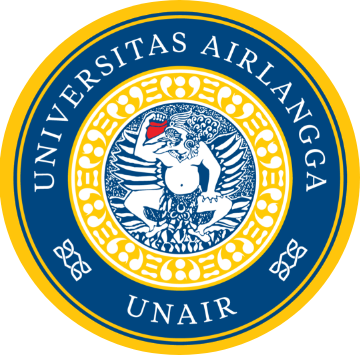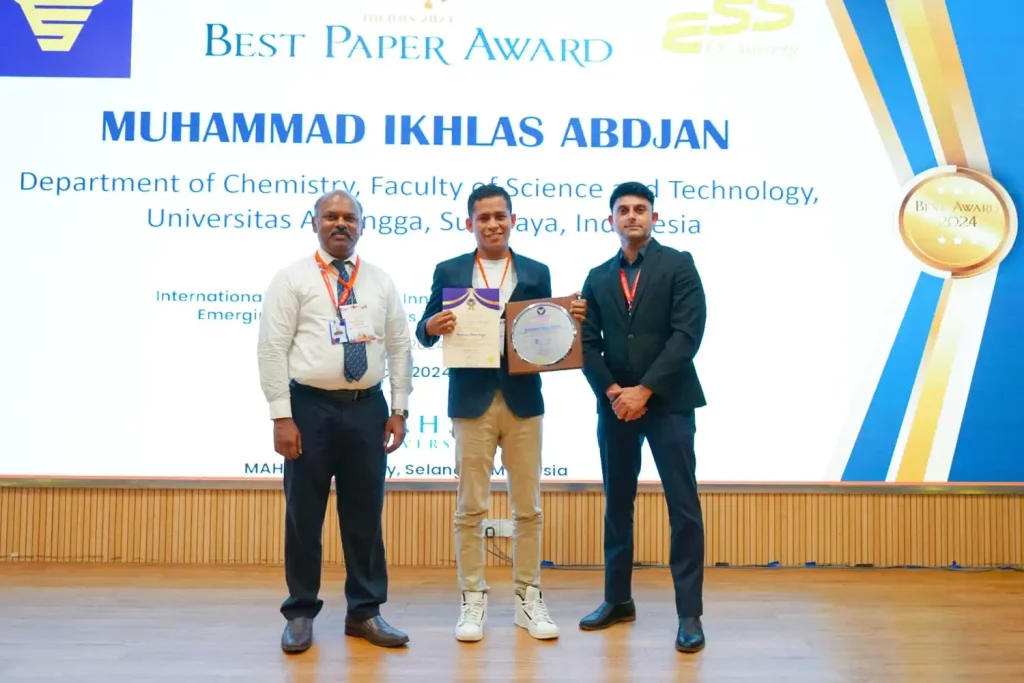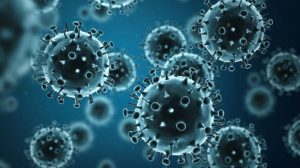UNAIR NEWS – A remarkable achievement made by a young researcher Muhammad Ikhlas Abdjan, a doctoral student at the Faculty of Science and Technology (FST) Universitas Airlangga (UNAIR). Ikhlas has made his mark on the international stage by receiving the best paper award from a well-known journal “Engineered Science” at the International Conference on Innovative Discoveries and Advancements in Applied Sciences iDEAAS 2024 at Mahsa University, Kuala Lumpur, Malaysia. Appreciation was given for his research in discovering medicinal compounds to prevent the growth of cancer cells.
His research has been selected as one of the papers out of hundreds of researchers worldwide. Ikhlas was the only student participating in the event. The participants were mostly senior researchers and professors.
Furthermore, the research supervised by Prof Dr Nanik Siti Aminah M Si and Prof Dr Alfinda Novi Kristanti DEA added this to its list of achievements. Previously, it has been included in popular chemistry in 2022, and hot article collections in 2021 by a well-known publisher Royal Society of Chemistry.
Compound discovery
His research entitled “Pharmacokinetic, DFT Modeling, Molecular Docking, and Molecular Dynamics Simulation Approaches: Diptoindonesin A as a Potential Inhibitor of Sirtuin-1” has caught the world’s attention because it is a new finding of a compound called Diptoindonesin A which can inhibit the growth of cancer cells.
“This compound was discovered by my mentor, Prof. Nanik Siti Aminah. However, it has never been tested on the sirtuin-1 enzyme. Therefore, I continued this research to find innovations to inhibit cancer cell growth by testing Diptoindonesin A with the sirtuin-1 enzyme,” he said.
The Diptoindonesin A compound can be found in the Shorea seminis plant which grows on the island of Kalimantan. Sirtuin-1 is one of the sirtuin enzyme classes that causes cancer. Ikhlas admitted that the research focused on sirtuin-1 because almost all types of cancer have activity from this enzyme.
“This research focuses on sirtuin-1 because this enzyme is major and its activity can be seen in most types of cancer such as cervical, breast, prostate and so on. Sirtuin-1 regulates cancer cells so that they continue to grow uncontrollably,” he said.
Ikhlas also added that previously he had carried out calculation simulation trials in the laboratory. From several enzyme compounds tested using computational calculation methods at the molecular level, Diptoindonesin A showed good inhibitory effects on sirtuin-1.
Research mechanism and methods
Ikhlas said that the research used computational studies. It includes pharmacokinetic methods, DFT modelling, molecular docking, and molecular dynamics simulation.
“Even though the structure is the same, the glucose content in Diptoindonesin A influences the activity of the sirtuin-1 enzyme. “Diptoindonesin A will interact with 21 amino acid residues in the sirtuin-1 enzyme which can inhibit the growth of cancer cells,” said Ikhlas.
Based on several testing methods, Diptoindonesin A is worthy of consideration as a cancer cell growth inhibitor drug. However, the drawback of this compound is that it is difficult to obtain because it is isolated from plants. To address this issue, further studies are expected to be conducted.
International collaboration
The discovery and research took almost a year. Ikhlas admitted to encountering obstacles related to research and laboratory facilities. To help with his research, Ikhlas even conducted research in two countries the International Center for Chemical and Biological Sciences Pakistan and Chulalongkorn University Thailand.
According to him, collaboration was vital in conducting his research. To develop his research, Ikhlas collaborates with the University of Malaya, Malaysia, regarding drug encapsulation in isolated compounds through computational and experimental approaches as anticancer agents.
“I hope this research can be sustainable, excellent research is research that never stops. It is always sustainable, focused on one field and developed continuously,” he concluded.
Author: Marshafyennda Scarbella
Editor: Feri Fenoria
Read also:
Be brave! Identify and detect cancer early
UNAIR researcher presents cervical cancer therapy innovations in Japan









